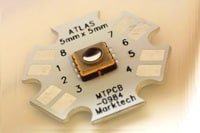By Amit Agarwal, Director Technical – India, ASEAN and ANZ, Ansys
The consumer appliance industry is one of the fastest-growing industries in the Indian market. Consumer/Home appliances in India have been increasing at a steady pace, driven by both large appliances and small appliances. The Indian appliances and consumer electronics market is expected to grow more than two-folds in the next five to six years and reach up to Rs 2 trillion, helped by the growth of the economy and domestic market.
One of the main reasons for this growth has been India’s emerging economy as well as the changing lifestyles of Indian consumers with the rise in the number of working people, nuclear families, single-person households, and the migrating of the job population. This leads to an increasing need for accessibility and these households are looking for products that offer convenience and considerably reduce the time and effort spent on everyday chores. The COVID-19 pandemic situation has also led to this change as people are now seeking to independently perform household tasks. This will lead to a further increase in demand for consumer appliances. Consumers are also looking for increased affordability. Today’s consumers are also looking for energy-efficient products which are connected and smart.
Challenges
The consumer appliance industry comes with its own unique challenges such as demand uncertainty, shrinking operating margins due to increased competition, shortened product lifecycles due to evolving consumer tastes, consumers requesting extended warranty periods and increasing pressure from regulators.
Consumer expectations for home appliances are very high. Consumers expect a product to perform day in and day out and also last for years. Reputation for reliability and energy efficiency are key product selling points of today. It is critical that all possible scenarios for a new product’s failure be tested before it goes to market. Consumers have come to expect products that are easier to use, are smaller in size but maximize capacity, consume less energy and emit less noise.
This is why computer-based modelling is the most promising if not only way forward for appliances manufacturers.
Simulation is the answer
Cutting-edge simulation tools are today helping companies meet these challenges and remain competitive in the market by enabling engineering innovation into their products, which increases product quality, improves energy efficiency, enhances reliability and makes them more affordable than ever.
Using simulation tools, designers can rapidly evaluate alternatives and refine designs early in the process, when it is least costly to make changes. The need for physical prototypes is also reduced, resulting in a shorter development cycle and a quicker to-market time. Keeping costs in line, maintaining quality and reliability, and striving for continual innovation are key business drivers. Simulation and modelling tools can help companies meet these consumer challenges in a wide range of sub-industries.
From washing machines to personal care products and food and beverage, leaders in the consumer goods industry are accelerating their innovation pipeline with simulation. These software solutions enable engineers to deliver competitively differentiated products to market faster and at lower cost than their peers while satisfying the sustainability concerns of customers.
Interconnected, Energy Efficient Appliances with simulation
Smart home products are becoming very popular today. An increasing number of devices and appliances in your home are communicating with one another and your smartphone. Getting these sophisticated smart products to work in a complex electromagnetic environment without performance degradation can be challenging. Electromagnetic Simulation tools effectively addresses interference and electromagnetic problems, enabling companies to develop smart devices that are connected.
Simulation enables the innovation behind next-generation smart connected appliances that are reliable and durable with minimal energy and resource utilization.
A comprehensive multiphysics application portfolio addresses the complex and highly diverse modelling and simulation needs of the consumer goods industry. These applications span from EMI/EMC, water ingress protection testing in Electronics components to mixing, heat transfer, noise, vibrations, drop test in mechanical components. Simulation solutions are uniquely positioned to address this complex diversity of applications.
Application
With the digital revolution, electronics are everywhere, chips are even more complex and sophisticated, products are made of increasingly complex composite materials, connected capabilities increase the value of products to consumers, additive manufacturing is transforming manufacturing, every product will soon be connected (and smart) and the Internet of Things is changing the way products are delivered and maintained. Simulation is the answer as simulation allows product managers to drive innovation, reduce costs, manage complexity, increase quality, lower cycle time and eliminate risks.
Energy efficiency
Due to stiffer government regulations and the need to deliver the added value of energy-efficient appliances to consumers, Sub-Zero seeks innovative appliance designs. Using Fluent, SpaceClaim Direct Modeler, Structural and Polyflow, engineers met regulatory targets for energy efficiency, improved systems optimization and designed robust appliances. Thus, Sub-Zero developed innovative designs for refrigerators, wine coolers and trouble-free installation systems on luxury appliances.
Design Time
Refrigerator design can be extremely time consuming to ensure that both performance and customer satisfaction goals are met. Engineers turned to CFX and ICEM CFD to perform a humidity test on a fully loaded refrigerator. The simulation was transient, with Interaction between static and rotating (fan) domains, and using porous media with heat sink to model the complex spine fin. The virtual tests helped engineers quickly design a robust new product.
Material Cost (Refrigerator Example)
It is crucial to optimize design to reduce sheet metal material costs while maintaining product performance and quality and also, to overcome difficulty in accurately evaluating cabinet deflection or door drop in a refrigerator due to influence of variation sources. Simulation can be employed to evaluate design factors that affect door drop, cabinet deflection and, ultimately, product performance, including mass thickness of various components and manufacturing process variation.
Thanks to simulation, there is a reduced overall cabinet mass by 26% while maintaining the door drop and cabinet displacement to reasonable levels, reduced material cost by 15% per product and reduced yearly costs by $1.2M.
Be it in a dishwasher, refrigerator, oven, AC, microwave or more, simulation helps in empowering design and delivering transformational products.
Pervasive Simulation through Product Life cycle
80% of the product costs is locked in early in the design phase. In design, pervasive simulation can reduce development time 9 times and warranty costs are 89% more likely to decrease. In manufacturing, the weight of a part can be reduced by 25% through topology optimization and additive manufacturing. When it comes to operations, there can be an increase in performance with 10-20% reduction in maintenance costs. As electronics become more and more pervasive in our lives and businesses, the complexity of design increases exponentially, requiring advanced electronics simulation to develop the reliable products we can no longer flourish without.






